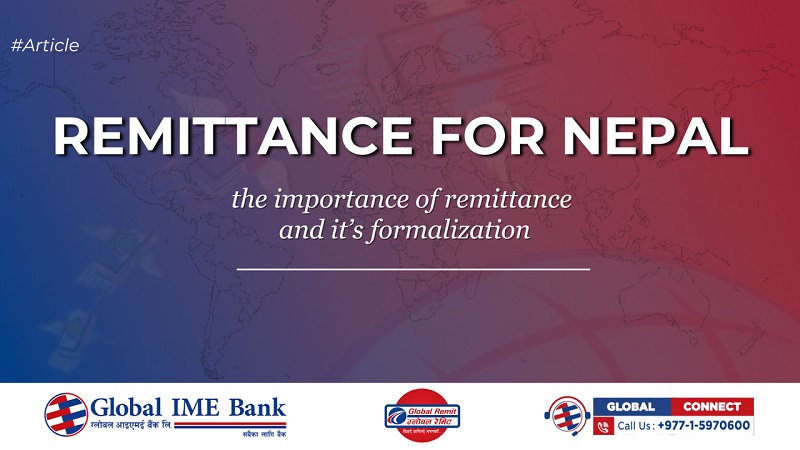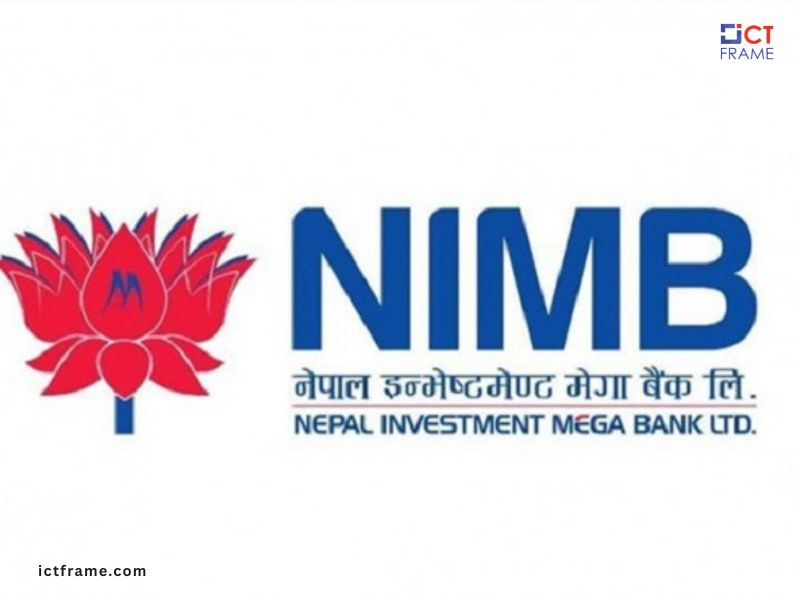Formalizing Remittance in Nepal: Empowering Migrant Workers and Strengthening the Economy
14th May 2024, Kathmandu
IME Remit’s visionary initiative, once dismissed as overly ambitious, has played a pivotal role in formalizing remittances in Nepal.
Today, with IME Remit and Global IME Bank leading the charge, remittances significantly contribute to Nepal’s economy, albeit challenges remain in curbing informal channels and enhancing migrant workers’ financial literacy. Stakeholders must collaborate to ensure safe, affordable, and digital remittance channels, empowering both migrant workers and the nation’s economic growth.
When the Chairman of Global IME Bank Limited and the current President of FNCCI, Mr. Chandra Prasad Dhakal claimed that he planned to bring in $2 Million per month through his brainchild, IME Remit, he was brushed off as over-ambitious by people.
This was over two decades ago when Nepal’s economy was not as heavily reliant on remittance as it is today. Today Nepal has been labelled as a country held up by remittance. And many statistics back these claims.
According to the data from Nepal Rastra Bank, the remittance inflow for 2022-23 stood at $9.33 billion in Nepal. The share of remittance to Nepal’s GDP was 22.8% in 2022 (World Bank).
Nepal ranks 11th among countries with the highest remittance inflows relative to its gross domestic product (GDP) and ranks 19th in terms of total inflow of remittance.
Despite the significance of remittance in the Nepalese economy, there is a lot of negativity surrounding the reliance on remittance. Many point to the over-dependence on remittance as an indicator of faltering domestic production and exports.
However, there are a lot of benefits that Nepal has reaped from it. Remittance has helped stabilize Nepal’s payment balance and financed nearly 84% of the trade deficit.
According to a 2021 report by Nepal Rastra Bank, about 38 percent of rural households in Nepal received remittances in 2018. Remittance has helped these rural households earn a stable income to help them out of poverty.
The same report states that remittance-receiving households are 2.3 percent less likely to get caught in poverty when compared to remittance-non-receiving households. The probability of households plunging into poverty decreases by about 1.1 percent with every 10 percent increase in household remittance inflows.
According to the half-yearly financial statement released by Nepal Rastra Bank for the fiscal year 2023-24, the foreign exchange reserves have increased by 18% (compared to mid-July 2023) and stand at Rs. 1.816 Trillion.
However, the biggest impact of remittance isn’t seen in the statistics. The Deputy Governor of Nepal Rastra Bank, Mr. Bam Bahadur Mishra, shared this sentiment on the Global IME Podcast.
“A migrant worker doesn’t go to Qatar from Nepal to increase the dollar reserves of Nepal. He/She goes there to be able to take care of their family and themselves financially. The regulatory bodies must ensure they can do that through simple and legitimate methods.”
Mr. Mishra said this in the podcast when talking about the dependence of Nepal on remittance. The statistics do not properly show the impact of the remittances on the lives of people who receive them.
Remittance has helped reduce the poverty level in rural families and ensured quality education, health, public services, and better living standards. The positive effect of remittance can also be seen through increased children’s education access.
As Mr. Bam Bahadur Mishra said, the regulators must make the remittance process easier, and safer, and provide incentives if possible. The government and financial institutions must facilitate cheap and easy access to remittance for the Nepalese working abroad.
Formalizing Remittance in Nepal
Despite the efforts of the central bank and financial institutions, the inflow of remittance through informal channels is still prevalent. However, the push from the authorities and institutions like IME Remit has helped bring remittance through the formal sectors.
If we look at data from Nepal Rastra Bank’s report in 2007-09, in 2000/01, out of total remittance, just about 20 percent flowed into the country through the official channel and 80 percent is estimated to have come through the unofficial channel.
In 2023 however, NRB authorities estimated the remittance through informal channels to be around 30% of the total remittance inflow. The 30% is still a high number that needs to be reduced.
There may be a myriad of reasons for the high number of migrant workers opting for informal channels. The digital and financial illiteracy among migrant workers is a major cause of them opting for ‘hassle-free’ informal channels.
The cost of sending remittances is also a deterring factor when it comes to people opting for ‘cheaper’ methods of sending money. According to the World Bank, the global average cost of sending remittances is 6.20% of the amount sent. The cost of sending remittances in South Asian countries including Nepal is a bit lower at 5.44%.
Almost 6% of the money one sends is a significant amount, especially to lower-income migrant workers. They opt to send money through relatives, agents, or methods like ‘Hundi’ as they can be a lot cheaper than the formal channels.
With the advent of digital payment systems, the cost of remittance has come down a lot. However, due to the inability and lack of training for migrant workers in using such methods, the cost benefits haven’t been utilized.
According to a survey by Nepal Rastra Bank, the financial literacy rate of Nepal is 57.9 percent, and the digital literacy rate is around 31 percent. There is a clear lack of the required skill set among Nepalese in terms of using digital finance platforms.
On the recent edition of the Global IME Podcast, the Executive Director of the Foreign Employment Board, Dr. Dwarika Upreti stated that Nepalese migrant workers must learn basic knowledge about using mobile devices and smartphones before going abroad.
Aside from the personal commitment of the people of Nepal, government bodies like the Foreign Employment Board and financial institutions like our own are also responsible for increasing the financial and digital literacy of migrant workers.
Global IME Bank, which contributed to the highest remittance inflows in Nepal among banks and financial institutions in 2079/80, is one of the stakeholders with a keen interest in improving the financial and digital literacy of Nepalese workers who are going abroad.
Global IME Bank in line with its initiative to conduct a banking literacy program under its nationwide financial literacy campaign has successfully concluded its financial literacy program with an impressive turnout with more than 20 thousand participants in 169 locations.
Programs such as this are vital in formalizing the remittance inflows that are crucial to the Nepalese economy. The Financial Literacy Framework promoted by Nepal Rastra Bank has to be made successful through campaigns from all the financial institutions of Nepal.
Education and literacy programs of people living in Nepal and abroad directly impact the methods of remittance flows to the nation. These initiatives help in securing the hard-earned money of the workers as they take part in formal channels of remittance.
The increase in remittance revenues through formal sectors can be utilized by the government in productive sectors which will decrease the dependence on the remittance in the long run.
According to a 2021 report by NRB, only around 2% of the remittance is utilized in capital formation. The utilization of remittance inflows in the productive sector enhances the output and aids in further poverty reduction.
To increase the utilization of remittance in the productive sectors and to secure the earnings of our migrant workers, formalizing the remittance coming in through informal channels is a necessity.
Through the initiation of Mr. Chandra Prasad Dhakal, which was first brushed off as way too ambitious, IME Remit paved the way for the formalization of remittances in Nepal. Today the two subsidiaries of IME Group, IME Remit, and Global IME Bank, contribute to the highest remittance inflows in their respective sectors.
Global IME Bank, with years of experience in serving Nepalese migrant workers, understands the need for a safe and secure inflow of remittance for both the migrant workers and the nation.
All the stakeholders including the federal government organs, local governments, banks, and financial institutions must strive towards improving the financial and digital literacy among migrant workers.
Nepal should not be viewed as a nation held together by remittances but as a growing nation boosted by remittances from its hardworking migrant workers. Every stakeholder must understand the importance of remittances and the need for proper formalization of remittances.
In conclusion, to quote the Deputy Governor of NRB Mr. Bam Bahadur Mishra again, regulators and stakeholders like ourselves must ensure that the migrant workers can remit their hard-earned money safely, cheaply, and digitized.
For more details: Formalizing Remittance in Nepal







